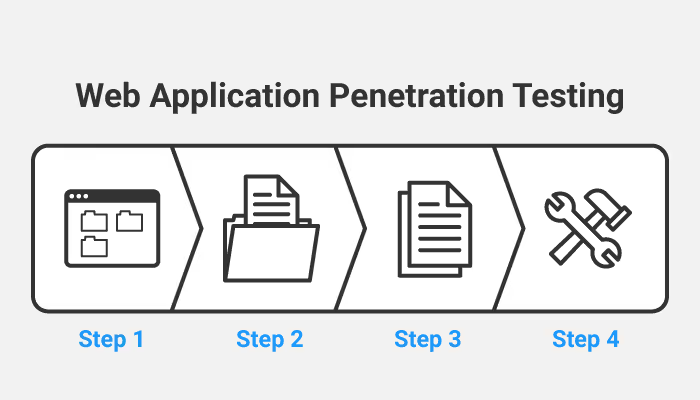Read this blog to understand the methodology, scope, and best practices for conducting effective web application penetration testing.

Web application penetration testing is a vital part of cybersecurity that helps organizations identify and mitigate vulnerabilities within their web-based applications. Read this blog to understand the methodology, scope, and best practices for conducting effective web application penetration testing.
If you'd rather watch the webinar that this blog is based on, check it out here.
One of the most critical aspects of web application testing is understanding the structure and functionality of your API . It’s important to assess how many calls and endpoints are present and what business logic they perform.
The same principle applies to web application testing, mainly when it involves different user roles. Whether you have just a few or even thousands of roles, evaluating the highest and lowest privilege levels is vital. Determining who in your organization has the highest privilege and what they can access, and then working your way down is a great way to streamline your process and get a thorough evaluation of your network’s privileges.
Testing isn’t just limited to the application layer; it extends to any underlying infrastructure. When dealing with traditional web servers, it’s essential to scan for available services and check for integrations with other systems, such as mail servers.
In cloud environments, your scope broadens to include cloud metadata. For example, testers may explore AWS keys stored within the metadata URL if your application is hosted on AWS, particularly if they exploit a Server-Side Request Forgery (SSRF) vulnerability.
Moreover, cloud-specific services–like S3 buckets–often fall within the scope of penetration tests, especially when they integrate with your application. The same scrutiny should apply to cross-domain interactions and microservices, where multiple applications might interact across subdomains or URLs.
Testers are interested in examining these integrations to find any potential vulnerabilities across your entire application ecosystem.
In multi-tenant or SaaS applications, the testing scope typically involves assessing low and high-privilege users within a tenant and the superuser roles that manage these tenants. This is critical for understanding how well the application enforces segregation between tenants and whether it’s possible to break the trust boundaries.
It’s super helpful for testers to provide access to multiple accounts for each role, especially in multi-tenant applications, because this lets testers thoroughly examine authentication/authorization barriers. This approach also ensures that users cannot access data they shouldn’t be able to, which is an important part of data security.
Brute force attacks depend on your environmental needs, but don’t worry– qualified pentesters perform them responsibly. For example, your testers might perform subdomain enumeration, URL discovery, or credential stuffing to test password policies.
However, testers won’t initiate attacks that could degrade your application’s availability. Instead, your pen testers will focus on simulating real-world attacks that won’t disrupt your services.
If Denial of Service (DoS) attacks are a concern based on your threat profile, it’s important to communicate this with the testing team. In some special cases, you might request DoS testing to understand your application's resilience under large-scale attacks. However, you’d need this kind of service to be in your agreed scope of work.
To get the most out of a penetration test, it’s essential you:
Web application penetration testing can be a nuanced process that involves evaluating various aspects of an application, from API calls and user roles to infrastructure and cloud integrations. By understanding the scope of testing and communicating with your penetration testing team, you can ensure that your applications are robust and secure against potential threats.